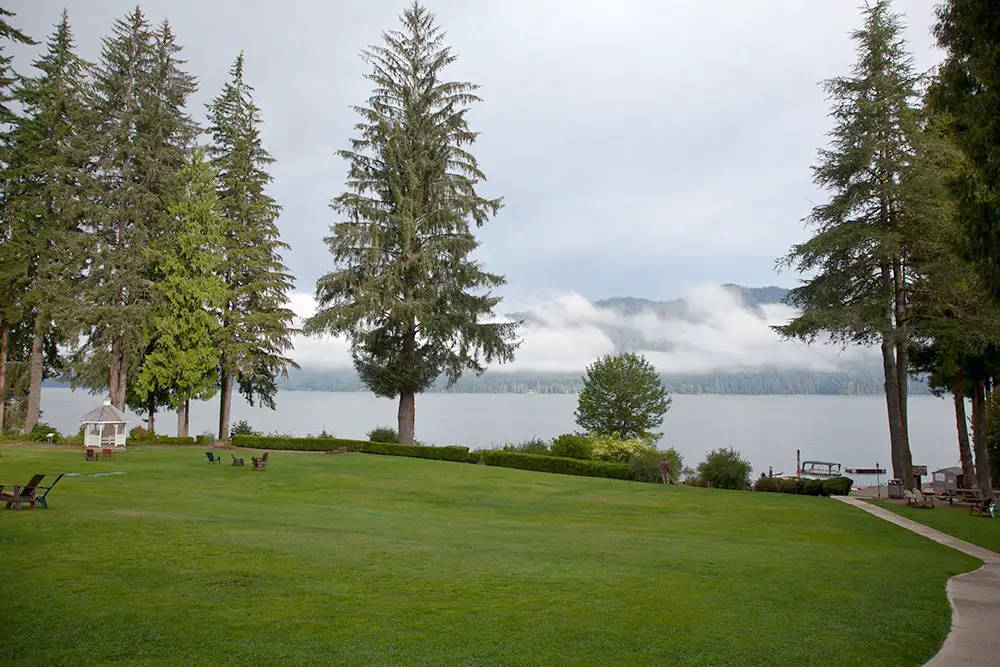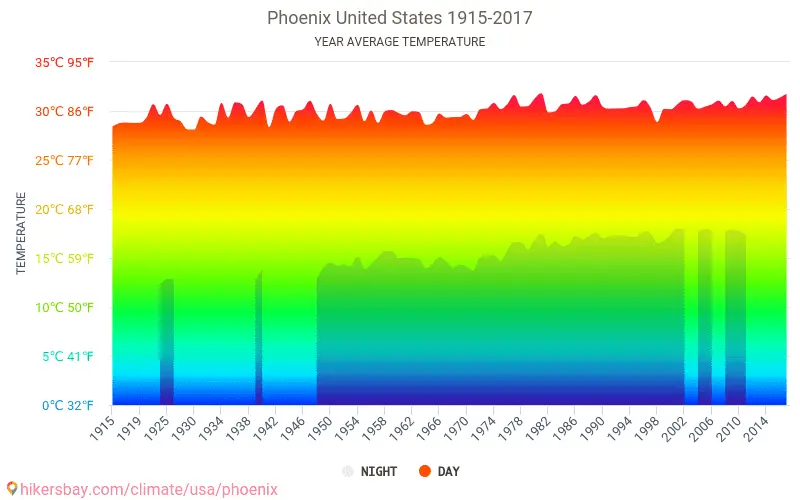Flagstaff, Arizona, is known for its stunning landscapes, vibrant culture, and fascinating climate. As one of the highest-elevation cities in the United States, Flagstaff boasts a unique weather profile that starkly contrasts with the stereotypical Arizonan desert climate.

The city experiences four distinct seasons, each marked by different temperatures, weather patterns, and activities. One aspect that often intrigues visitors and locals alike is the average temperature in Flagstaff, AZ, which varies dramatically through the year, shaping the city’s charm and appeal.
This comprehensive article provides an in-depth exploration of Flagstaff’s average temperatures, historical changes, comparisons with nearby cities, and impacts on the local environment and economy.
A Detailed Breakdown of Average Temperatures by Month
Understanding the average temperatures by month can provide valuable insights into Flagstaff, Arizona’s distinct seasonal climate. January is typically the coldest month, with average high temperatures around the mid-40s (Fahrenheit), while nighttime temperatures can plunge well below freezing.
As we transition to spring around March and April, temperatures start to climb, with daytime averages reaching into the 50s and 60s. Summer months from June to August offer pleasantly warm conditions with average highs in the 70s and 80s, a refreshing contrast to the searing heat experienced in many parts of Arizona.
Autumn sees a steady cooldown, with temperatures dipping back into the 60s and 50s during September and October. By December, winter sets in again, completing the yearly cycle. This detailed breakdown paints a comprehensive picture of Flagstaff’s average temperatures throughout the year.
Winter (December to February)
Winter in Flagstaff is a season of chill and snow. With the city’s high altitude and northern location, winter temperatures often plunge below freezing, averaging around 18°F to 45°F according to Weather-Atlas. Snow is frequent, providing the perfect setting for winter sports enthusiasts.
As winter subsides, spring brings a gradual warming trend. Average temperatures range from lows of around 24°F in early spring to highs of about 66°F by the end of May, as indicated by the National Weather Service. The season is marked by the blossoming of wildflowers, providing a spectacular display of colors.
Summer (June to August)
Summer in Flagstaff is a marked departure from the scorching heat experienced in much of Arizona. While temperatures can reach highs of around 82°F, they are typically much cooler than other parts of the state due to Flagstaff’s elevation as outlined by US Climate Data.
Autumn is a picturesque season in Flagstaff, with temperatures gradually cooling from summer highs to winter lows. The city experiences average highs of 73°F in early autumn, cooling to around 52°F by late November. This data is corroborated by Current Results.
Historical Average Temperatures: How They Have Changed Over Time
The historical average temperatures in Flagstaff, Arizona, reveal an intriguing story of climatic shifts over time. As with many places globally, Flagstaff has experienced changes in its average temperatures, primarily due to climate change.

Historical weather data indicate a gradual warming trend over the past few decades. Winters have become slightly milder, with less frequent extreme cold spells, while summers have seen a slight uptick in temperatures. This long-term trend is not just a statistical anomaly but a change that residents have perceived and scientists have corroborated through extensive climatological studies.
While the city still enjoys a cooler climate compared to much of Arizona, these shifts in historical average temperatures are significant and have potential implications for Flagstaff’s ecosystem, economy, and way of life.
Decadal Analysis: Changes from the 1980s to 2020s
Historical weather data, like that from the National Centers for Environmental Information, indicates a gradual but noticeable warming trend in Flagstaff over the past few decades. While each year sees fluctuations, the long-term trend aligns with broader global warming patterns.
As in much of the world, climate change is making its mark on Flagstaff’s climate. According to research from Climate Central, rising global temperatures could lead to more heatwaves and less snowfall in the future. Understanding these potential changes is crucial for the city’s future planning.
Comparing Flagstaff’s Average Temperatures with Nearby Cities
The average temperatures in Flagstaff, Arizona, present a stark contrast to those in nearby cities due to its higher altitude. Compared to cities such as Phoenix and Tucson located in the lower-altitude desert regions of the state, Flagstaff experiences a much cooler climate.
While cities in the desert often see temperatures rising above 100°F in the summer, Flagstaff’s summer averages are comfortably in the low 80s. Similarly, winters in Flagstaff are markedly colder with substantial snowfall, while other Arizonian cities enjoy a milder winter season.
This climatic variation not only sets Flagstaff apart from its neighboring cities but also contributes to its unique character and charm, offering a refreshing change of pace within the same state.
Flagstaff Vs. Phoenix: A Tale of Two Climates
Phoenix, located in the heart of the Sonoran Desert, experiences a far more extreme climate than Flagstaff. Data from Weather and Climate reveals that Phoenix’s temperatures often exceed 100°F in summer, while its winter is mild, typically above 45°F.
Tucson, like Flagstaff, is located in a desert environment, but its temperatures are typically higher due to its lower elevation. According to World Weather Online, Tucson’s summer temperatures often soar above 90°F, while its winter temperatures are typically mild, usually remaining above freezing.
Average Temperatures and Outdoor Activities in Flagstaff
The average temperatures in Flagstaff, Arizona, are a significant factor in shaping the array of outdoor activities available throughout the year. The city’s high altitude and unique climatic conditions offer an exciting mix of recreational opportunities.
In the winter months, when temperatures dip, Flagstaff becomes a haven for winter sports enthusiasts with activities such as skiing, snowboarding, and snowshoeing. As temperatures rise to milder levels in the summer, hiking, mountain biking, and camping become popular pursuits, taking advantage of the pleasant weather and stunning natural beauty of the area.
Thus, understanding Flagstaff’s average temperatures is key to planning and enjoying the wealth of outdoor activities that the city offers across the seasons.
Best Times to Visit for Outdoor Enthusiasts
Depending on their interests, visitors might choose different seasons to visit Flagstaff. Winter brings snow and cold, perfect for skiing at venues like Arizona Snowbowl. Summer, despite being the warmest season, is mild and ideal for hiking and other outdoor activities, thanks to Flagstaff’s elevation.
Flagstaff’s residents and visitors adapt their activities to the changing seasons. Winter might see skiing and snowboarding, while summer offers hiking, mountain biking, and camping. Discover Flagstaff offers a comprehensive guide to the range of activities available throughout the year.
Impact of Average Temperatures on Flagstaff’s Ecosystem
The average temperatures in Flagstaff, Arizona, play a pivotal role in shaping the city’s distinctive ecosystem. Its colder winters and milder summers, dictated by its high-altitude setting, support a diverse array of flora and fauna that have adapted to these unique climatic conditions.
The seasonal temperature swings regulate the life cycles of many plants and animals. For instance, the cold winters drive certain wildlife into hibernation, while some tree species rely on these freezing temperatures for seed germination.

During the milder summers, a multitude of plant species burst into bloom, and animal activity increases. In short, the average temperatures in Flagstaff have a profound impact on the city’s rich biodiversity and the overall health of its ecosystem.
Flora: The Role of Temperature in Shaping Flagstaff’s Plant Life
The flora of Flagstaff is robust and versatile, surviving harsh winters and enjoying mild summers. The Coconino National Forest surrounding Flagstaff is home to a variety of plant species that have adapted to the city’s unique climate.
Likewise, wildlife in and around Flagstaff has developed remarkable adaptations to thrive in this high-altitude environment. As suggested by the Arizona Game and Fish Department, diverse species of mammals, birds, and insects call Flagstaff home, their activities changing with the average temperatures of each season.
Average Temperatures and Their Effects on Local Economy
Flagstaff’s local economy is deeply intertwined with its distinctive climatic conditions, primarily the average temperatures. With the chillier winters and relatively cooler summers, different sectors of the local economy see shifts corresponding with these seasonal changes.
The tourism sector, for example, experiences a surge during winter months when tourists flock to the city for winter sports activities, while milder summers open up opportunities for outdoor exploration and activities such as hiking, bird watching, and sightseeing.
Similarly, agricultural practices within the region are designed around these weather conditions, with farming activities planned according to the seasons. Thus, the average temperatures in Flagstaff significantly influence the dynamics of the local economy.
Impact on Tourism Industry
Flagstaff’s unique climate attracts tourists year-round, contributing significantly to its local economy. According to Visit Arizona, winter sports, hiking, and leaf-peeping in the fall draw tourists, with each season offering its unique appeal.
While Flagstaff may not be known as an agricultural hotspot, temperature plays a critical role in the local farming and livestock industries. Data from the University of Arizona Cooperative Extension reveals how local agriculture adapts to Flagstaff’s average temperatures.
Frequently Asked Questions: Average Temp In Flagstaff AZ
In this section, we will be delving into some of the most common inquiries and curiosities that surround our topic.
What is the average temperature in Flagstaff, AZ?
The average temperature in Flagstaff varies by season, with winter lows around 18°F and summer highs reaching 82°F.
How does Flagstaff’s climate compare to other cities in Arizona?
Flagstaff’s high-altitude location results in cooler temperatures compared to cities like Phoenix and Tucson, making it unique within Arizona.
What impacts do average temperatures have on Flagstaff’s local economy?
The local economy, particularly tourism and agriculture, is significantly influenced by Flagstaff’s average temperatures, with different attractions and activities suited to each season.
What effects does climate change have on Flagstaff’s average temperatures?
Climate change may lead to higher average temperatures, potentially impacting snowfall and heatwaves in Flagstaff.
When is the best time to visit Flagstaff for outdoor activities?
The best time to visit depends on the preferred activities. Winter is great for skiing, while the mild summer is perfect for hiking and outdoor exploration.
Conclusion
Flagstaff, Arizona, is a city with a climate as diverse as its people, culture, and landscapes. Understanding the average temperatures throughout the year, and their impacts on local flora, fauna, and economy, is crucial for visitors and locals alike.
The average temperatures tell a fascinating tale of adaptability, resilience, and beauty – shaping Flagstaff’s unique identity and lifestyle.



Leave a Comment
You must be logged in to post a comment.